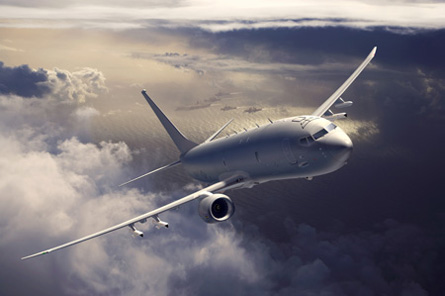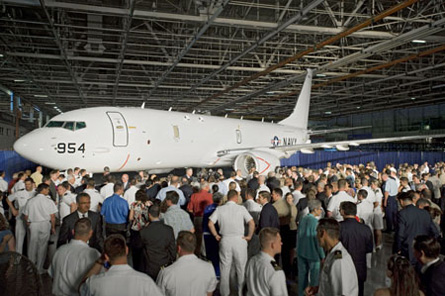The Boeing P-8A Poseidon has secretly acquired a new role for the US Navy that will transform the maritime patrol aircraft into a rival of the US Air Force's Northrop Grumman E-8C JSTARS airborne ground surveillance system.
Details of the new mission have been disclosed by Raytheon, which on 31 July announced the receipt of a multi-year contract to develop an advanced radar for the P-8A programme.
Raytheon says the advanced airborne sensor (AAS) will be a successor to the littoral surveillance radar system (LSRS), which is operational today on a small subset of the USN's Lockheed P-3C Orion fleet.
Capable of tracking moving ground targets, the canoe pod-housed LSRS has allowed some of the navy's P-3Cs to shift into the overland surveillance mission, performing a role normally reserved for the USAF's JSTARS fleet.
Until the Raytheon announcement, USN officials had never proposed the idea of installing an LSRS-type sensor on the P-8A, and instead maintained that the type would be focused on the core maritime patrol mission, especially the anti-submarine warfare threat.
 |
|---|
© Boeing |
"We will be ready with intelligent technology when the Poseidon takes its place as the navy's ISR [intelligence, surveillance and reconnaissance] capability," says Capt Scott Anderson, AAS and LSRS programme manager.
Boeing, Raytheon and the USN have declined requests to provide further information on the new mission.
The existence of the mechanically scanned LSRS only became known in 2006, when Boeing announced that the system had been used to track moving ground targets and cue a strike by its AGM-84 standoff land attack missile - expanded response. Last year, Raytheon also revealed that the sensor can track moving targets making a 90° turn.
The USN plans to buy 117 P-8As to partly replace its P-3C fleet, with Northrop Grumman to also build between 48 and 68 unmanned RQ-4N Global Hawk broad area maritime surveillance aircraft.
 |
|---|
© Boeing |
Boeing formally rolled out the navy's first P-8A during a 30 July ceremony in Renton, Washington, with the event staged more than two months after the programme achieved first flight. The company has also received a new order to start building three more P-8A test aircraft, with these to join five already on contract.
Source: Flight International
















